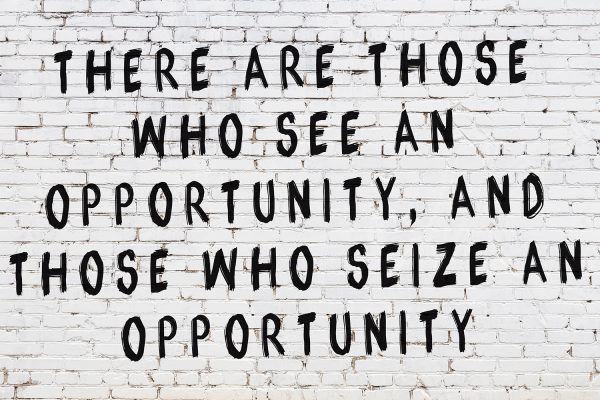Five Tools That Will Help You Survive—and Lead Your Tribe to Success—in the Concrete Jungle

Create a reliable map to use while leading your tribe through the challenging landscape of the modern global economy.
Odds are, you’ve watched one of the many popular survival shows. You know the type: A host (or in some cases, a group of people) is dropped into the wilderness far from civilization with only the clothes on his back and perhaps a few other items. Then, it’s up to him to survive until he can reach safety. Along the way, viewers are amazed by the tools he fashions to make survival possible: a fire-starting bow drill made of sticks, a fishing line made of shoelaces and a thorn, a water container made from a cactus or gourd, a “frying pan” made from a rock, and shelters made from trees, leaves, and vines (or even snow!), just to name a few.
So, what on earth do business leaders have in common with these enterprising survival show hosts?
As a leader, it can often feel like you’ve been dropped in the middle of an inhospitable environment (better known as the global economy) with a similar lack of ready-made tools…and as an added challenge, you must get not only yourself, but your whole tribe, to safety. The good news is that a few simple tools will help you to create a map that will successfully guide your organization through the concrete jungle. You’ll have to be a certain type of leader to plot a safe course forward—specifically, a Zebra and Cheetah (or Z&C) Leader.
Zebra and Cheetah Leaders are so called because they exhibit qualities of both breeds. Like zebras, they boast a distinctive appearance that others can easily recognize. Like cheetahs, they possess great speed and are particularly quick accelerators. And like both, they have an ability to utilize their senses so well that they excel in adapting to their environments. In other words, these are leaders who are able to survive and thrive in the fast-paced, always-changing, and highly competitive business world.
It’s important to realize, though, that “just” being an engaging, adaptable, forward-thinking person isn’t going to convince people to follow you. In order to lead diverse tribes within the concrete jungle, you must show others that you not only have the tools to survive, but that you also have a map and know which way to go.
Here, we share five essential map-making tools that will help you to navigate and survive in the corporate wilderness…and lead your tribe to safety and success.
Equip your tribe with focus and emotion.
When your tribe is trekking through the concrete jungle, everyone must share a dominant focus. A dominant focus is more than just what your company does or the outcomes it wants to achieve; it encapsulates what drives you, what your core purpose is, and what you’re passionate about. Without that focus, tribe members will jump from one thing to another, seldom (if ever) being truly productive. While their intentions may be as good as gold, a lack of understanding and/or unity in their efforts (as well as a lack of a common passion) will lead to scattered results at best.
Here’s an example of what infusing your tribe with focus and emotion looks like in action. A Z&C Leader will roll out several activities that keep the focus—let’s say being the best service provider in the area—alive and emotionally connected to each team member.
This leader might hold Monday morning meetings focused on lead indicators answering how the organization is going to attract business that week. On Wednesdays, the leader could provide one hour of education focused on growing the model. And on Fridays, he or she might do an “autopsy” of what worked and what didn’t—this forces people in the jungle to formulate a plan of attack regarding how to kill something and bring it back to the tribe. To make sure employees stayed emotionally connected, I would advise the leader to hold celebrations at certain sales milestones.
Empower with excellence through good goal-setting.
We live in a goal-obsessed society. So why, then, do we end up lowering so many of those goals…or not achieving them at all? The reason is simple: Randomly set goals rarely work because they don’t have emotional staying power. In other words, our follow-through is vulnerable to external variables, moods, or momentary circumstances.
Good goals have four components: They should be clear, specific, measurable, and linked to your organization’s dominant focus. Clear, specific, measurable goals work because we can break them down into quarterly, monthly, weekly, and daily increments of progress.
More important, they are explicitly connected to a dominant focus—again, that’s your organization’s passionate purpose. This helps both managers and subordinates organize their efforts toward daily activities that concentrate on things like sales processes and customer service activities, which are systematically connected to organizations’ dreams. Because they’re loaded with an emotional pull, these good goals allow people to do more of the things they want to do and less of the things they feel forced to do.
Create the scoreboard.
The simple fact is that people play harder when there’s a scoreboard, when—eventually—a clear winner and a clear loser will emerge. You can build an organizational scoreboard using these guidelines:
- Determine past performances. (What did each person do over the last 12-month cycle?)
- Identify market variables. (How much growth is possible for each person to achieve in her/his specific marketplace?)
- Estimate future capacity. (How much do you want each person to realistically stretch herself/himself over the next cycle?)
- Determine high-value activities. (What things must each person do to achieve her/his future capacity? What is a wise use of time and what isn’t?)
- Determine metrics. (How will each person measure, record, and report their progress?)
When you set up your scoreboard, be sure to clearly reassure tribe members that they are not competing against one another; instead, remind them that they’re competing against their own potentials. This will spawn positive peer pressure instead of cutthroat competition and will also make sure that low performers are no longer able to hide in the middle of the pack, taking valuable resources but not contributing to the tribe’s survival.
Coach ’em up.
If the low performers your scoreboard helps you identify won’t or can’t improve, it’s a Z&C Leader’s responsibility to move them out of the organization. That’s the easy (if not always pleasant) part. What will take much more of your time, energy, and passion is coaching your remaining tribe members up—helping the mediocre become good and the good become great.
This isn’t only about providing continuing education and teaching technical skills—though those things certainly are components of coaching up. Leaders must compensate tribe members fairly, let them know it’s safe to be creative and innovative, treat them kindly, and assure them that their work is making a positive impact as well as building a legacy they can be proud of. When all of these areas are being satisfactorily addressed, you’ll have built a tribe in which everyone is passionate, motivated, and productive.
Throw in thunderbolts.
Newsflash: People aren’t robots. Yes, your tribe will be excited once they see how quickly and effectively you’re moving through the concrete jungle…but eventually, their enthusiasm will reach a lull. Even though they may be committed to your organization’s dominant focus, many of your people simply aren’t accustomed to producing at high levels for prolonged periods of time. That’s why Z&C Leaders keep their tribes fresh by throwing thunderbolts: unexpected jolts to the group that renew energy or pull everyone out of the doldrums.
Thunderbolts might take the form of an unexpected but dynamic guest speaker, a high-intensity meeting, an unanticipated bonus or incentive from the leader, a company-wide rally, or any other surprise event that catches the tribe unaware. Based on our observations, weariness and complacency tend to creep in around the sixth or seventh month of every cycle. Just make sure you’re throwing thunderbolts to stir emotions and stoke energy—not to make yourself more popular.
Yes, the concrete jungle is an organic place where the winds of change, failure, success, and opportunity are always present and blow upon all of us. But if you have tools that allow you to harness the power of human capital, the odds will be stacked in your favor as you chart a course toward your dominant focus.
About the Authors: Coach Micheal Burt and Colby B. Jubenville, PhD, are the coauthors of Zebras & Cheetahs: Look Different and Stay Agile to Survive the Business Jungle. You can visit them at www.coachburt.com and www.redherringinc.com. The book (Wiley, 2013, ISBN: 978-1-1186318-0-5, $25.00, www.zebrasandcheetahs.com) is available at bookstores nationwide or on www.wiley.com.







